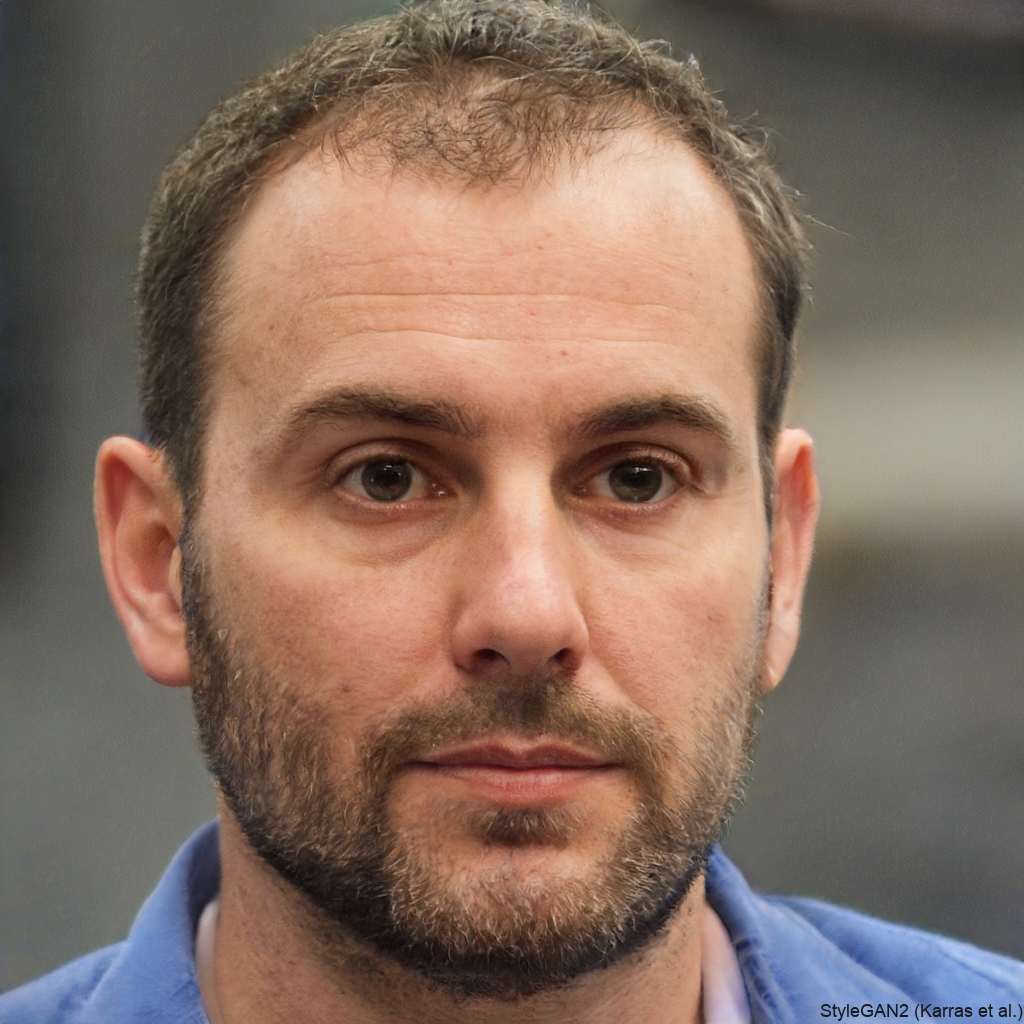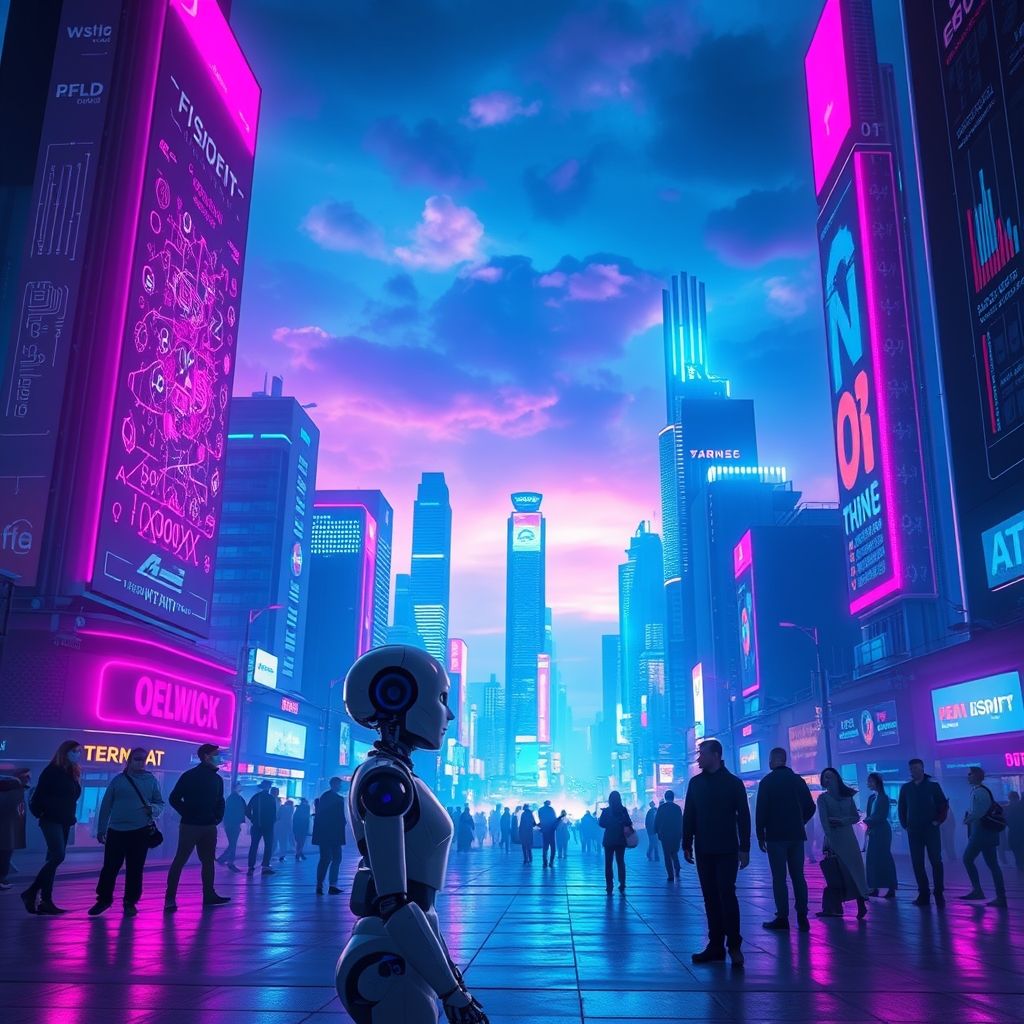Introduction: A Glimpse into Tomorrow
Imagine waking up to a world where your coffee brews itself not because you set a timer, but because your AI assistant knows you’re stressed and needs that extra boost. Or picture a doctor diagnosing a rare disease in minutes—thanks to an AI that analyzed millions of medical records overnight. This isn’t science fiction. It’s the future we’re stepping into, and it’s being shaped by one of the most transformative forces of our time: artificial intelligence (AI).
AI is no longer just a buzzword. It’s in our smartphones, our cars, our hospitals, and even our homes. From voice assistants like Siri and Alexa to recommendation engines on Netflix and Amazon, AI is quietly reshaping how we live, work, and think. But what’s coming next? What groundbreaking trends and innovations will define the future of AI in the next decade?
In this article, we’ll explore the most exciting developments on the horizon—from generative AI and quantum computing to ethical challenges and AI in everyday life. We’ll break down complex ideas into simple, relatable examples and show you how these advancements could impact your world. Whether you’re a tech enthusiast, a curious learner, or someone just trying to keep up with the pace of change, this guide will help you understand not just what is happening, but why it matters.
So, let’s dive in and uncover what the future of artificial intelligence holds—and how you can be ready for it.
1. The Rise of Generative AI: Creativity Meets Machines
When most people think of AI, they imagine robots or data analysis. But one of the most surprising and powerful trends in recent years is generative AI—systems that can create original content, from text and images to music and video.
You’ve probably heard of tools like ChatGPT, DALL·E, or MidJourney. These aren’t just chatbots or image filters. They’re AI models trained on vast amounts of data that can generate human-like writing, design stunning artwork, or even compose music in the style of Beethoven. And they’re getting better—fast.
Take this example: a small business owner needs a social media post, a blog article, and a product image for a new line of eco-friendly sneakers. In the past, this would require hiring a writer, a designer, and a photographer. Now, with generative AI, they can create all three in under an hour—using just a few prompts.
But how does it work?
Generative AI uses deep learning models, especially a type called transformers, to predict what comes next in a sequence—whether it’s the next word in a sentence or the next pixel in an image. By learning patterns from massive datasets, these models can “imagine” new content that feels authentic and creative.
Why is this important?
Because it’s democratizing creativity. You don’t need to be a professional artist or writer to produce high-quality content. Students can generate study guides, marketers can craft campaigns, and developers can auto-generate code. The barrier to entry for innovation is lower than ever.
Of course, there are challenges—like misinformation, copyright issues, and job displacement. But the potential is undeniable. As these tools become more accurate and accessible, generative AI won’t replace human creativity—it will amplify it.
2. AI in Healthcare: Saving Lives One Algorithm at a Time
Now, let’s shift from creativity to care. One of the most promising—and emotionally powerful—applications of AI is in healthcare.
Every year, millions of lives are affected by delayed diagnoses, human error, or limited access to specialists. AI is stepping in to bridge these gaps. Imagine a world where a smartphone app can detect early signs of skin cancer, or where an AI analyzes your genetic data to predict your risk of heart disease before symptoms appear.
Real-world impact is already happening.
For example, Google’s DeepMind developed an AI system that can detect over 50 eye diseases from retinal scans with accuracy rivaling top ophthalmologists. In another case, AI-powered tools like IBM Watson Health help oncologists recommend personalized cancer treatments by analyzing medical literature and patient records in seconds—something that would take humans weeks.
Even in drug discovery, AI is accelerating progress. Traditionally, developing a new drug takes over a decade and costs billions. But with AI, researchers can simulate how molecules interact, predict side effects, and identify promising compounds in a fraction of the time. During the pandemic, AI helped identify potential treatments for COVID-19 in weeks, not years.
What does this mean for you?
In the near future, your doctor might use AI as a second opinion. Wearable devices could monitor your vitals 24/7 and alert you to potential issues before they become emergencies. Rural communities could access expert-level diagnostics through AI-powered telemedicine.
The bottom line?
AI isn’t replacing doctors—it’s empowering them. And the result could be earlier diagnoses, more effective treatments, and longer, healthier lives for millions.
3. AI and the Future of Work: Adapt or Thrive?
With AI getting smarter, a big question looms: Will robots take our jobs?
It’s a valid concern. From self-checkout kiosks to automated customer service bots, AI is already handling tasks once done by humans. A 2023 report by the World Economic Forum estimated that AI could displace 85 million jobs by 2025—but it could also create 97 million new ones.
So, what’s really happening?
Think of it like the industrial revolution. When machines were introduced, many feared mass unemployment. But instead, new industries emerged—mechanics, engineers, factory managers. The same is happening now. AI is automating repetitive tasks, but it’s also creating demand for new skills: AI trainers, data analysts, ethics consultants, and prompt engineers.
Let’s look at a practical example.
A bank used to employ dozens of clerks to manually review loan applications. Now, AI handles the initial screening—checking credit scores, income, and risk factors in seconds. But humans are still needed to handle exceptions, explain decisions, and ensure fairness. The job didn’t disappear—it evolved.
So, how can you future-proof your career?
Here are three practical steps:
- Embrace AI as a tool, not a threat. Learn how to use AI to boost your productivity—whether it’s summarizing emails, analyzing data, or drafting reports.
- Develop “human” skills. AI struggles with empathy, creativity, and complex decision-making. Skills like emotional intelligence, leadership, and critical thinking will be more valuable than ever.
- Stay curious. Take online courses in data literacy, AI basics, or digital tools. Platforms like Coursera, edX, and Khan Academy offer free or low-cost options.
The future of work isn’t about humans vs. machines—it’s about humans with machines. Those who adapt will not only survive but thrive.
4. Ethical AI: The Need for Responsibility and Trust
As AI becomes more powerful, a crucial question arises: Can we trust it?
AI systems are only as good as the data they’re trained on. And if that data is biased, the AI will be too. There have been real-world cases where AI hiring tools favored men over women, or facial recognition systems misidentified people of color at higher rates.
These aren’t just technical glitches—they’re ethical failures.
Take the case of an AI used in U.S. hospitals to allocate healthcare resources. It was found to systematically under-prioritize Black patients, not because of overt racism, but because the algorithm used “healthcare costs” as a proxy for “health needs.” Since Black patients historically had less access to care, they spent less money—and were wrongly labeled as lower risk.
This is why ethical AI matters.
We need systems that are fair, transparent, and accountable. That means:
- Bias detection: Regularly auditing AI models for unfair patterns.
- Explainability: Making sure AI decisions can be understood by humans (not just “black box” algorithms).
- Human oversight: Keeping people in the loop, especially in high-stakes areas like law, medicine, and finance.
Governments and companies are starting to respond. The European Union’s AI Act is one of the first major regulations to classify AI systems by risk level and ban certain uses, like mass surveillance. Meanwhile, tech giants like Google and Microsoft have established AI ethics boards.
But responsibility isn’t just for policymakers and CEOs.
As users, we can demand transparency. Ask questions like: How was this AI trained? Who benefits from it? Could it harm anyone? The more we care, the more companies will prioritize ethics.
Because the future of AI shouldn’t just be smart—it should be just.
5. AI in Daily Life: Smarter Homes, Cities, and Habits
So far, we’ve talked about big-picture trends. But what about your day-to-day life? How is AI already making your routine easier, safer, and more efficient?
Let’s start at home.
Smart speakers like Amazon Echo or Google Nest use AI to understand your voice commands, control lights, play music, and even order groceries. But the next generation of smart homes goes even further. Imagine your refrigerator knowing when you’re low on milk and adding it to your shopping list—or your thermostat learning your schedule and adjusting the temperature before you wake up.
Now zoom out to smart cities.
In places like Singapore and Barcelona, AI-powered traffic systems reduce congestion by adjusting traffic lights in real time. Waste management trucks use AI to optimize collection routes, cutting fuel use and emissions. Even public safety is improving, with AI analyzing camera feeds to detect accidents or suspicious behavior—while respecting privacy laws.
And let’s not forget personal AI assistants.
Beyond Siri and Alexa, we’re moving toward AI that anticipates your needs. For example, Google’s Gemini can now manage your emails, suggest replies, and even book appointments by reading your calendar and messages. It’s like having a personal assistant who never sleeps.
The key benefit? Time.
AI handles the small, repetitive tasks so you can focus on what matters—family, creativity, rest. One study found that employees who use AI tools save an average of 6 hours per week on administrative work.
Pro tip: Start small. Try using AI to:
- Summarize long articles
- Generate workout plans
- Translate emails
- Track your spending
You don’t need to overhaul your life—just let AI handle the background noise.
6. Quantum AI: The Next Frontier
Now, let’s take a leap into the future—literally.
What if I told you there’s a technology that could make today’s AI look like a calculator compared to a supercomputer? Meet quantum computing.
Traditional computers use bits—0s and 1s—to process information. Quantum computers use qubits, which can be 0, 1, or both at the same time (thanks to a phenomenon called superposition). This allows them to solve certain problems exponentially faster.
So, what happens when you combine quantum computing with AI?
You get quantum AI—a game-changer for fields like drug discovery, climate modeling, and cryptography.
For example, simulating a complex molecule for a new medicine might take today’s best supercomputers thousands of years. A quantum AI could do it in hours. Or consider climate change: quantum AI could model the entire Earth’s atmosphere with unprecedented accuracy, helping us predict extreme weather and design better green technologies.
Are we there yet?
Not quite. Quantum computers are still in their infancy—fragile, expensive, and prone to errors. But companies like IBM, Google, and startups like Rigetti are making rapid progress. In 2023, IBM unveiled a 433-qubit processor, a major leap forward.
Why should you care?
Because quantum AI could solve problems we once thought impossible. It won’t replace your phone’s AI assistant anytime soon, but it could lead to breakthroughs in energy, medicine, and sustainability that benefit everyone.
Think of it as the “moon landing” of AI—a bold step into the unknown, with the potential to transform our world.
7. AI and Education: Personalized Learning for Everyone
Education is another area where AI is making waves—and not a moment too soon.
One-size-fits-all teaching doesn’t work. Some students learn faster, others need more time. Some thrive with visuals, others with hands-on practice. AI is changing that by enabling personalized learning.
Imagine a student struggling with algebra. Instead of falling behind, they log into an AI-powered tutoring platform that adapts to their pace. It identifies their weak spots, offers targeted exercises, and even adjusts the teaching style—using animations, real-world examples, or step-by-step breakdowns.
Platforms like Khan Academy, Duolingo, and Squirrel AI are already doing this.
Duolingo’s AI tailors language lessons based on your mistakes and retention. Squirrel AI, used in China, has helped students improve test scores by up to 30% through adaptive learning paths.
For teachers, AI is a powerful ally.
It can grade essays, detect plagiarism, and provide insights into student performance. This frees up time for what really matters: mentoring, inspiring, and connecting with students.
And for lifelong learners?
AI makes education more accessible. Whether you’re a retiree learning to code or a single parent earning a degree online, AI-powered platforms can fit your schedule, budget, and goals.
The future of education isn’t about replacing teachers—it’s about empowering every learner with the tools they need to succeed.
8. The Human Touch: Why Empathy Still Matters
After all this talk about algorithms and automation, let’s pause and ask: What makes us human?
AI can write poems, diagnose diseases, and drive cars. But it can’t feel joy, grief, or love. It can mimic empathy, but it doesn’t experience it.
That’s why, as AI advances, human connection becomes more valuable, not less.
Consider therapy. AI chatbots like Woebot or Wysa can help with basic mental health support—offering CBT techniques or mood tracking. But for deep emotional healing, people still need human therapists who can truly listen, understand, and empathize.
Or think about customer service. An AI can resolve a billing issue in seconds. But when someone is upset, frustrated, or grieving, they often want to speak to a real person who can say, “I’m sorry this happened. I’m here for you.”
The lesson?
AI should handle the tasks—humans should handle the relationships.
In the future, the most successful companies, schools, and communities will be those that balance technology with humanity. They’ll use AI to increase efficiency, but never at the cost of compassion.
Because no matter how smart machines become, the human touch is irreplaceable.
Conclusion: Shaping the Future Together
We’ve covered a lot of ground—from generative AI and healthcare to ethics, quantum computing, and the importance of human connection. The future of artificial intelligence isn’t a single path; it’s a vast, evolving landscape full of possibilities.
The key takeaway? AI is a tool—and like any tool, its impact depends on how we use it.
It can automate tasks, unlock discoveries, and improve lives. But it can also deepen inequalities, spread misinformation, or erode privacy—if we’re not careful.
So what can you do?
- Stay informed. Follow trusted sources on AI news and trends.
- Use AI wisely. Experiment with tools that save time and boost creativity.
- Ask questions. Demand transparency and fairness in AI systems.
- Keep being human. Nurture empathy, curiosity, and connection.
The future isn’t something that just happens to us. It’s something we create—together.
So, what excites you most about the future of AI? Are you ready to learn a new skill, try a smart tool, or share your thoughts with others?
Drop a comment below, share this article with someone curious, or simply take one small step today toward a smarter, more human tomorrow.
The future is calling. Will you answer?

Danilo Ferreira is a passionate entrepreneur, travel, and financial freedom enthusiast, always seeking new ways to expand his horizons and live with purpose. Driven by a high-performance mindset, he combines discipline and curiosity to achieve ambitious goals, exploring the world while building projects that reflect his vision of independence and continuous growth.







